|
AUTHOR AND RESEARCHER HISTORIAN ANGELO BISSESSARSINGH ( HMG) In this the final chapter of this series we will look at how the ancient festival of Divali found its home in Trinidad and evolved. In the past two episodes we have traced the roots of the celebration and its arrival in the west in the hearts and minds of the Hindus among the indentured immigrants who began arriving as labour for the sugar plantations in 1845. Felicity can be honoured as the first district which pioneered the large-scale communal celebrations of the festival of lights as was noted by Morton Klass, an anthropologist who lived in the area in the 1950s. Klass also noted that modern technology was being introduced as he recounted: “Two or three wealthy families in central Felicity tried an innovation the year I resided in the village: strings of vari-coloured electric bulbs were festooned around their houses, forming a major part of their displays though a few deyas were still in evidence. The saving in coconut oil is of course offset by the cost of the bulbs and electricity.” Today the Felicity celebrations are heavily electrified and powerful fireworks now lighten the sky but the time-honoured deyas mounted on bamboo scaffolds are still of key importance. Nothing however exemplifies how important Divali has become to the national landscape (the holiday was officially declared in 1966) than the Divali Nagar. The best way to describe the Nagar is as a grand fair centred around Divali that blends the ancient civilization of India with the heady pulse and tempo of life that make Trinis world famous. Located just east of the metropolis of Chaguanas the expansive space that is transformed annually into the gaudy extravaganza was designated for this purpose in 1986 after the original location at the Mid Center Mall carpark proved inadequate. From day one the Nagar, which opens a few weeks before the Divali holiday, proved to be a wild success as hundreds of vendors flocked to the area. It has since been upgraded to include a pavilion, an air-conditioned indoor hall, a magnificent statue and landscaped grounds. An old locomotive and bogie cart silent reminder of the island’s sugar industry (the original impetus for labour from India in 1845) stands to the rear of the compound. The National Council for Indian Culture is the body that oversees the Nagar and ensures that the fair opens with a dramatic launch that draws a wide spectrum of people from every walk of life, from government ministers to the burgesses of the area. To the first time visitor, the Nagar experience immediately assaults all the senses. The aroma of pholourie, aloo pies and saheenas frying in coconut oil clashes with the pungent curries being prepared just a few feet away. The riot of colour is almost psychedelic as elegant silk saris , heavy with embroidery mingle with delicate filigree jewellery crafted locally as well as imported from India. At all times, the fine sounds of classical Indian music can be heard, occasionally broken by more invigorating Indo Caribbean beats. The Divali Nagar is an addictive experience as evidenced by the thousands of cars and buses which converge every day whilst the festival is in session, all with the expectation of imbibing the essence of the Divali Nagar. FIREWORKS AT THE DIVALI NAGAR- PHOTO COURTESY EDISON BOODOOSINGH (2015
0 Comments
Author : Professor Angelo Bissessarsingh ( HMG) Virtual Museum of Trinidad and Tobago, (Published by Patricia Bissessarsingh, Nov 7, 2023) In the first chapter of this three-part series we looked at the religious awakenings of Hinduism under indentureship among the Indo Trinidadians of the 19th century. This consciousness of self and personal doctrine was largely due to the formation of small villages as Sir Louis De Verteuil noted in 1884: “Many have already availed themselves of the offer, and have thus become permanent settlers. At first they were granted 10 acres of land, worth £10, considered as equivalent to the passage-money. As a rule, a locality is selected, surveyed in lots of five acres, and a settlement is thus formed of Indian immigrants only; and an Indian name is given to the settlement. Thus we have the Calcutta, the Madras, the Barrackpoor, and the Fyzabad settlements. The immigrants are thus encouraged to form small communities, speaking the same language, and having the same habits and ways.” In these settlements, village life went on much the same way as it had in India for thousands of years. The community council of the panchayat was revived and festivals observed regularly. Divali was not initially foremost among these. It began as largely a family affair among the immigrants since its celebration as a neighbourhood occasion is not mentioned anywhere in the writings of the 19thcentury. The all-important deya was most likely moulded from the earth of the dooryard of the homesteads formed by the Indians in their villages and filled with coconut oil made by themselves from nuts grown on their own land. Phagwa was a much larger concern since its riot of colours and very nature made it a village event. Divali truly emerged as a large-scale festival in the 20th century, about a decade or so after the end of indentureship in 1917. It began to take on an elaborate dimension with bamboo being split into fantastic scaffoldings wherein thousands of deyas would be placed to shine forth . The sound of bursting bamboo is still something which breaks on the ear and heralds the Divali season and it is a pastime indulged in by all the youths of the community regardless of colour or creed. Deyas were also being mass produced by potters, especially along the Southern Main Road from Chase Village to Chaguanas where they still ply their ancestral trades today. Along the main road and Cacandee Road in Felicity is where the first large community Divali displays began to occur in the 1950s. Anthropologist Morton Klass lived for a while in the area whilst observing the villagers and noted: “This is a festival of lights said to be in honour of both the goddess Lakshmi and of Lord Rama’s return from the forest. It falls on the thirteenth day of the first half of the month of Kartik or around November, and is one of the most happily and eagerly anticipated of holidays . Every house is cleaned , fresh curtains are hung and special delicacies are prepared. Around each house a display of deyas is set out. During Divali the maximum number of deyas that the family can afford is displayed. The deyas are lighted at sunset and mos of the children and old people remain at home to keep them refilled and burning. There is a service in the Siwala in the evening but few except the most religious attend and most of these for a short time. Most of the younger adults set out and lighted their own deyas go walking through the community to see the display of others.” Stay tuned for the final installment of this series to find out how Divali emerged from its enclave in the Indo Trinidadian villages to achieve national holiday status and its continued evolution. Painting courtesy Rudolph Bissessarsingh In the first chapter of this three-part series written by historian Angelo Bissessarsingh we are given an insight into the religious awakenings of Hinduism under indentureship among the Indo-Trinidadians of the 19th century.
CHAPTER 1 Hinduism’s Arrival in the West Indies. Author : Angelo Bissessarsingh. As a historian and erstwhile anthropologist it never ceases to amaze me at how religious and cultural tolerance manifests itself in Trinidad and Tobago. Almost every schoolchild can recite a basic understanding of the annual Hindu festival of Lights, Divali. They know the elements of the triumph of light over darkness, good over evil, bits of the sacred Ramayana and the welcoming of the goddess Lakshmi into the home to ensure a year of prosperity for the family. There are few communities here where in the Hindu calendar month of Kartik (although the earlier month of Ashvin sometimes encompasses the festival) where the firefly lights of tiny clay deyas do not shine forth on the night of the festival, upholding ancient traditions deeply rooted in our ancestry. To fully understand the portent of Divali (Deepaavali as the celebration is known in India) one must take a brief look at the roots of Hinduism in Trinidad and Tobago. In 1845 a group of indentured immigrants arrived from India aboard the Fatel Razack as the first of thousands who would flock hither to found a new society in an alien land. With them to the west came the ancient ways of their motherland and Hinduism had arrived. Initially there was no provision for any cultural or religious freedom since the colonial authorities merely envisioned the presence of the Indians as an easily-replenished source of labour bound to fixed contracts. It was only when the eminent suitability of these people for sugar estate work became apparent then financial and land incentives were offered between 1860 and 1880 which resulted in the formation of a permanent peasant class. It is with this firm establishment that itinerant babajis or pundits began to appear in the villages of their people alongside quaint mandirs with mud walls and carat-thatched roofs. A few of these holy men were real Brahmins but these were in the minority with a large number merely being elevated to piety by having a considerable knowledge of the epics of the Ramayana and Mahabharata. Although most of the indentured immigrants were from agrarian classes were from rural stock and formerly bound by the fetters of the caste system, it was noted in 1887 by J.H Collens (in a rather myopic account) that a widespread knowledge of the epics was apparent and this of course was the local origin of the Ramayana readings and Ramleela plays which have characterized Indo -Trinidadian Hinduism ever since: “It must be acknowledged that the Puranas are a mass of contradiction, extravagance, and idolatry, though couched in highly poetical language. It is, nevertheless, astonishing how familiar the Trinidadian coolies are with them ; even amongst the humble labourers who till our fields there is a considerable knowledge of them, and you may often in the evening, work being done, see and hear a group of coolies crouching down in a semicircle, chanting whole stanzas of the epic poems, Ramayan etc. In the preface of the Ramayan it is stated that he who constantly hears and sings this poem will obtain the highest bliss hereafter, and become as one of the gods.” It is this spiritual awakening which inevitably led to the introduction of Divali and other Hindu festivals to Trinidad. In the next chapter of this series, we will look at how deyas punctuated the darkness in rural Trinidad as Divali emerged as a national phenomenon. Photo :Three babas or pundits in Trinidad circa 1894. The permanent settlement of formerly indentured immigrants paved the way for a cultural and religious expansion of their identities hitherto suppressed by the colonial plantocracy. (Source: Patricia Bissessarsingh, Oct 15, 2022) Another moving story by Richard Charan - Trinidad Express By Richard Charan Oct.11, 2023 Three men live under the Endeavour overpass along the highway in Chaguanas.
One appears to be a once-hopeful migrant, now a member of Trinidad’s growing underclass. The second, a dangerous-looking Indian fellow, has wasted away the low-quality drugs he is surely smoking. The third, his body and clothing caked in an equal amount of grime, is an ethnic mystery. He is like a silhouette. child born at quarters: The gateman’s wife, Phyllis Augustine. In a dry space under the bridge, they have their shopping carts, buckets, sponge beds and fireside. Anybody with work and business north of the Caroni would likely have seen these men. Because between 3 p.m. and nightfall, drivers are caught up in south-bound traffic gridlock around this area, five days a week. Crawling along at between zero and one kilometre per hour, there isn’t much else to look at, except the Venezuelan migrants selling plantain chips, or the teenagers hawking Coca-Cola and cotton candy. The gatekeeper’s quarters at Endeavour, Chaguanas. Since no one has a solution to this highway torture, suffering drivers might be interested in knowing there is a piece of built history near the overpass, hiding in plain sight. We can look at that instead, while wasting away part of our short lives. The railway house. You will see it just before the AMCO compound, under the billboards advertising rum. It is a building from the time of the Trinidad Government Railway (TGR). It was once the home of Mr Kennedy Augustine, who was assigned the accommodation since he needed to stay close to the railway tracks and respond to the approaching locomotives. He held the position of gatekeeper, with the job of controlling the barrier across what was then the two-lane Princes Margaret Highway, to allow for the road crossing of the passenger trains coming from the north and east. Back then, drivers could only reach the dead-end Chaguanas roundabout before turning into the Central Trinidad town, and then on to San Fernando along the Old Southern Main Road. That roundabout was replaced around 1966 with what we now see as the elevated Chaguanas overpass after Government invested in a 1.4-mile (2.3-kilometre) highway extension to Chase Village. Another 14 miles (22.5 kilometres) of highway was completed in the early ’70s by the same contractor—George Wimpey and Company. But before all that development, Augustine still held an important job, having earned a promotion from platelayer (laying down and maintaining the tracks) to gateman, with one of the perks being the three-room quarters, which was already old since the railway had extended through Chaguanas to Couva by 1882. The Endeavour location was likely the same one mentioned in VS Naipaul’s 2003 book Literary Occasions where he wrote, “Not far from my mother’s family house in Chaguanas was the railway crossing. Twice or four times a day an old one-armed negro closed and opened the gates. Did this man have a story? The man himself didn’t seem to think so. He lived in absolute harmony with the vacancies of his calling...”. It appears Augustine spent that downtime between gatekeeping calls in a rather fertile way. Born in Grenada in 1915, he left his wife and four children there in 1941 to look for work on the big island of Trinidad. He found jobs in the World War II construction boom before getting his break in the railway. And with a permanent position, he sent for his wife, Phillis, and his children. They would have five more in Endeavour, one of them being born, suddenly, in the railway quarters. Those were lean but happy days, said his youngest child, 69-year-old Audrey Farrell, who remembered the area being cultivated lands, with fields of orange and coconuts, breadfruit and bison, all of it surrounded by the sugarcane fields. “When the train passed, the engine driver would stop and pick us up right here where we lived, and daddy would go open the gate for the train to pass across (where the north-bound lanes of the Uriah Butler highway now pass). The last train to San Fernando rolled in August 1965, and Augustine’s job became redundant. He got a job in the Food and Drugs Division in Port of Spain, and the family supplemented their income by selling vegetables on the highway shoulder. All nine children grew up in the quarters, and several still occupy the property, with children and grandchildren. Phyllis died early, at age 57, but railway man Alexander lived on. He was 89 when he died 18 years ago, to be survived by his house, now occupied by two grandsons and a son. They intend to maintain the property until the passage of time takes its timber. And while you sit in the traffic, consider this. If you had taken a 1960s passenger train from Port of Spain to San Fernando today, you would be home by now. NOTE: At its peak, the Trinidad Government Railway laid down more than 118 miles (190 kilometres) of track, and reached Siparia, Sangre Grande, Rio Claro, Princes town, Port of Spain, Chaguanas, Tabaquite, Couva and San Fernando, with plans to take it all the way to Erin, Toco, and Guayaguayare, according to the research of railway historian Glen Beadon, who has written the authoritative book The Railways of Trinidad. The system closed for good on December 31, 1968, because it became unprofitable. It was killed by the emergence of port facilities, improved road conditions, and the greater use of buses, taxis,and the private cars now clogging every secondary and primary road.  By the late Angelo Bissessarsingh. The first organized cricket club in the island was formed in the late 1870s by a group of English colonial officers and planters. The Sovereign Cricket club membership eventually formed what was the genesis of the still-existing Queen’s Park Cricket Club (QPCC) in 1891. Five years later, the QPCC acquired the lease on lands which were to become the Queen’s Park Oval which is today one of the best cricketing arenas in the Caribbean. The ethnic composition of the QPCC came under fire in the 1890s. This was an era characterized by anti-colonial sentiments and heightened by the presence of several influential and vocal coloured men who spoke out against old and racially biased stratification of colonial society. One of these agitators in particular, Edgar Maresse-Smith, was pivotal in having Lebrun Constantine accepted into the QPCC as its first non-white member. Lebrun Constantine was born in Maraval , a district barely a mile outside Trinidad’s capital city of Port-of-Spain on a cocoa plantation where his parents were workers. He worked on a cocoa estate as well in his youth and played cricket in matches held at the Queen’s Park Savannah in Port-of-Spain where he quickly established a reputation for being a good batsman. At that time Cricket in Trinidad had not as yet taken on an organized front although one of the most distinguished icons of the game was born in the island. Lebrun made history as well as being a regular on the Trinidad cricket team from as early as 1893-94. Inter-colonial cricket matches between Trinidad, Barbados and Jamaica were then popular and Lebrun was a player in almost every meet after 1899. The first three tournaments were fielded with all-white teams. In 1894, Robert Slade made the first tour of the West Indies with an English cricket team, followed two years later by a team under Arthur Priestly. In the latter tour, the English side came up against an all-West Indian contingent that included Lebrun Constantine and lost. In 1900, R.S.A Warner (brother of Sir Pelham Warner) led the first West Indian touring team to England. Although not accorded first class status, the West Indians played well. Once again, the lineup included Lebrun Constantine as a batsman and wicket keeper. His batting averages were second in the West Indies team, being 30 for 610. During this tour as well, Constantine made history by becoming the first West Indian to score a century (113 runs) against an English team. In 1906 another tour to England took place of which he was a member. This time he managed to be third in the batting averages. Of his performance in the 1906 tour, the following commentary was given; "another of the brigade who proved himself very strong on the left side and can bat with power. He fields in the slips and can bowl right arm medium pace if required". Aside from his prowess as a batsman and wicket keeper, Lebrun was also a fielder of note with his energy and accuracy coming in for high praise. Lebrun Constantine’s last match of his professional career was in a 1923 inter-colonial match against Barbados. This was a landmark event since also in the batting lineup was Lebrun’s son – Learie Nicholas Constantine (21 September 1901 – 1 July 1971) - who rose to become one of the greatest cricketers in history and was later knighted and in 1969 became the first black peer in the House of Lords as Baron Constantine of Maraval in Trinidad and the County Palatine in Lancaster. Another son, Elias (22 May 1912 – 22 May 2003) also became a cricketer of renown, and who played for the West Indies in test matches in the 1930s. Despite his pioneering career he was largely low-profile in his own homeland. Whilst touring with the first West Indian teams, he supported himself as a coachman in the employ of Madame Poleska de Boissiere. Lebrun occasionally made public statements on cricket in the local press but remained mostly private until he died in 1942. (Source: Angelo Bissessarsingh's Vitrual Museum of Trinidad & Tobago, September 21, 2023) My Navel String Buried Here!!!!!
By K Michael Kangalee The term 'meh navel-string buried here,” derives from past widespread cultural practice of burying the navel-string (umbilical cord) of a new-born usually under a banana (fig) tree. This ritual can be traced back to cultural practices of indigenous people and it symbolizes the planting of roots for their child in the land and in the community, thus reaffirming the child's cultural connections to the land of their birth. In many African cultures the umbilical cord is usually buried under a tree as a symbolic act of ongoing life. Other cultures throughout the world also share this ritual. I wonder if mothers in T&T still bury the navel-strings of their new-born babies in tree roots ? Do you know where your navel string is buried? One of our members Michael Kangalee who is 81 years shares his memory of the spot where his navel string is buried and the home he grew up in. The original fig tree where my navel string was buried in 1942 was cut down after bearing , however other suckers have grown-up in the same spot near to where I lived as a child . As such although today I am over 80 years , I know the exact spot where my navel string is buried since a fig patch still exists even today. When and how my Nana and Nani acquired the piece of land to build our humble home [the last piece of land where the Tacarigua river flows under the Eastern Main Road ], is unknown - -it could well have been the property of the maternal great grandparents Bhairo and Lachmin, who most likely emerged from their Indentureship Labours around 1895, or thereabouts. See those the two "fig" trees in the centre left in the attached photo my mother told me in 1955, that my "navel-string"{or is it umbilical cord?} was buried there in 1943 by my Nani. The "baby fig" tree there now in 2019 [ see colour photo ], has to be "an offspring of the original 1942 fig tree". I have eaten curry green fig talkarie picked from a tree in this patch in 2017. Seems to me that for the past 80 years and more, that spot on the family-land was always reserved for "fig trees"... and you will notice the land slowing gently to the Tacarigua river.... and you also see the Northern range in the background. Growing up as a little boy I could clearly visualize the tapia house we lived in that was built about 4 feet off the ground. [I cannot really remember whether this was a "leepayed" area or not?] –my family had a place to call home and the kids a place to play; rain or sun and that all that mattered. I remembered our humble dwelling having an open gallery; a Living Room/ Dining Room, and a bedroom[Basdeo Mamoo/Tanti Dolly], then down the steps to the outside kitchen[ communal cooking by the good mom and the two aunts];next to the gallery was a bedroom[the Nani] then another bedroom {Mom and Dad}. The next bedroom belonged to Puchee Mamoo and Tanti Laikoo, and Mamoo Shun and the baby brother stayed in the next bedroom.We children, about six , at that time, slept on blankets and bags, on the Living Room floor. Rasool, Gillan, and Baing and Motilal Mamoos had their own homes, by this time[1949], and sometime after 1950, only Nani and Basdeo Mamoo and his family remained at that house. There were about six concrete steps at the front and an equal number at the rear, which led to the outside kitchen, a galvanised structure, with a double- chulha, a home-made table and storage area/utensils for dry goods . An oil drum was acquired and converted to an oven { with heat at the bottom and top}; occasionally bread and sponge cake emerged and I could even in 2023, recall the pre-1950 smell of freshly-baking rum cake at Christmas - -either by Tanti Dolly or Tanti Laikoo. There was a chicken run at the rear, so eggs were available. I do not believe that pork and beef were ever served in our home. I do recall however, my Nani teaching me to "leepay - -{my Nani would insist that I keep my finger nails on my left hand very short}, and her fastidiousness about a clean yard, especially when she was arranging Hindu prayers {never a grain of grass was to be found on the yard}. The photo above was taken some time between 1963 and 1973 and shows a "fig tree" in some prominence; I am easily persuaded that that "fig tree" was a sucker which came from the original fig tree where my navel string was planted in 1942. (Source: Angelo Bissessarsingh's Virtual Museum of Trinidad and Tobago, August 9, 2023) |
T&T news blogThe intent of this blog is to bring some news from home and other fun items. If you enjoy what you read, please leave us a comment.. Archives
July 2025
Categories
All
|
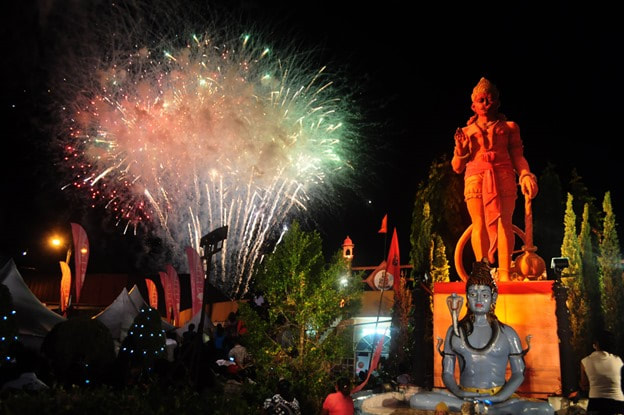
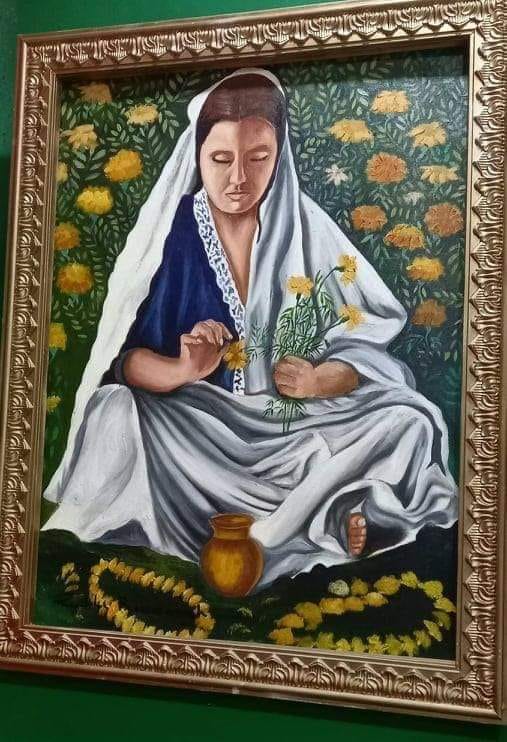
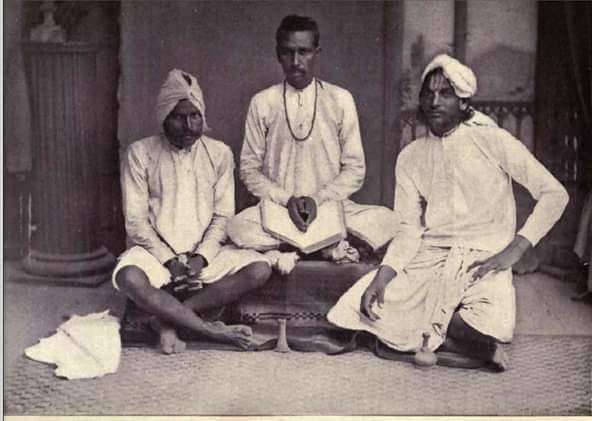
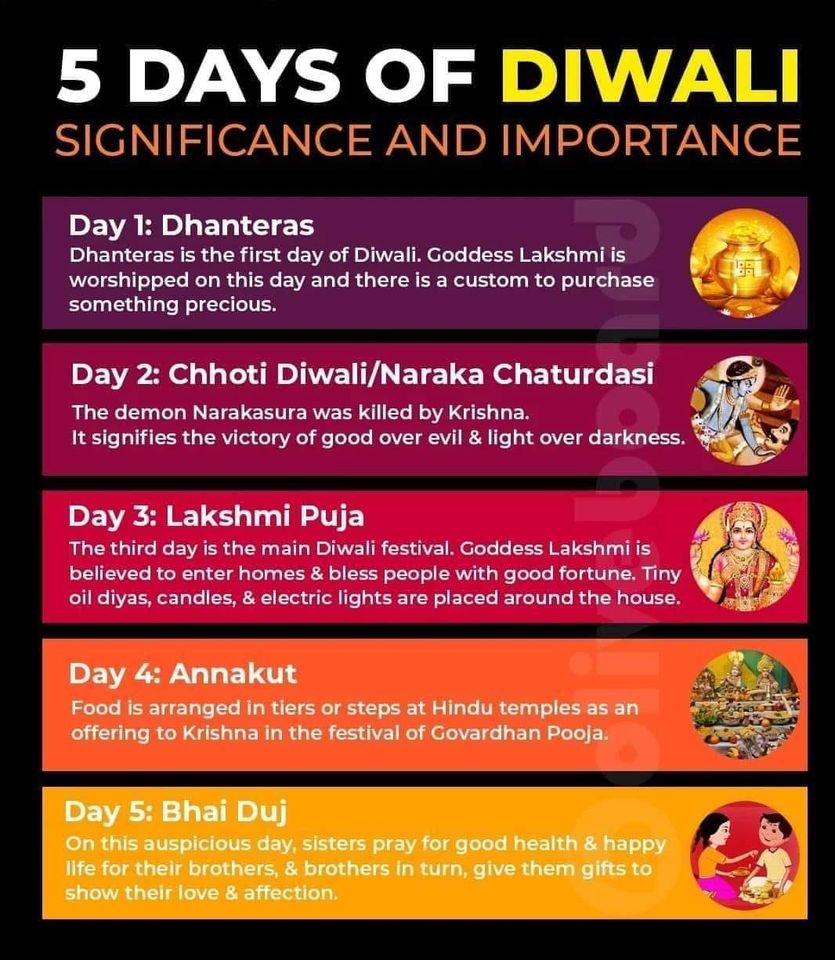



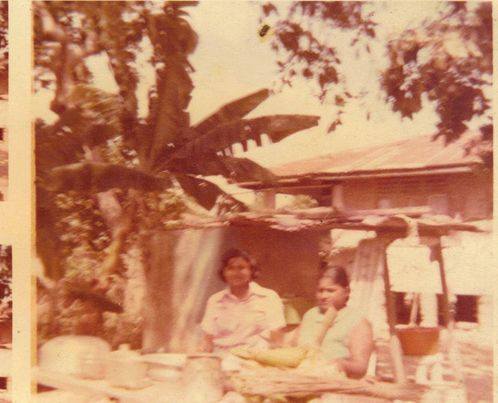

 RSS Feed
RSS Feed